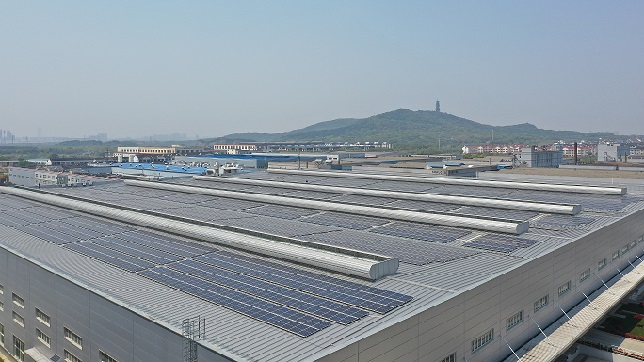Green Power Station: Continental starts photovoltaic power generation in Zhangjiagang

- Project phase I has a total photovoltaic capacity of 1.918 megawatts and is expected to generate 1.8 million kilowatt hours per year.
- Half of its electricity demand through solar power generation during production in the daytime.
- By implementing, Zhangjiagang plant has optimized its energy structure, thus laying a solid foundation for sustainable development in the future.
- The photovoltaic project is equivalent to reducing CO2 emissions by almost 1,400 tons per year or planting the equivalent of 750 trees.
The technology company Continental has launched its photovoltaic energy generation project at its production site in Zhangjiagang, China. Phase I of the project has a total photovoltaic capacity of 1,918 megawatts and is expected to generate 1.8 million kilowatt hours per year. This means that the Zhangjiagang plant will meet half of its electricity demand through solar power generation during production in the daytime. By implementing the project, the Zhangjiagang plant has optimized its energy structure, thus laying a solid foundation for sustainable development in the future. “Continental has always followed the concept of green, environmental-friendly and energy-efficient in its products and services. Through this photovoltaic power generation project, we aim to operate in a sustainable way and assume our corporate social responsibility,” said Hui Zhu, heading the surface solutions business in the APAC region of Continental. With that the site in Zhangjiagang has taken a crucial step towards fulfilling the Climate Protection Strategy which is geared towards making business sustainable across all levels of the value chain. Continental sets itself the goal of using of electricity exclusively from renewable sources in all production sites by the end of 2020.
China’s National Energy Administration encourages the development of distributed renewable power in its Guidance on the Implementation of the 13th Five-Year Plan for the Development of Renewable Energy issued in 2017. The Zhangjiagang plant has actively responded to the national renewable energy development plan by installing roof photovoltaic modules for converting solar energy into electricity. By doing so, the plant supplies itself with clean and reliable electricity, whilst achieving the goal of energy conservation, environmental protection, and cost reduction.
The plant chose 275 Wp polycrystalline solar modules for the project and installed almost 7,000 modules on its 20,000 m2 rooftop surface. The total installed capacity of project phase I is about 1,918 kWp, and the conversion efficiency of the power generation system reaches more than 80%. These photovoltaic modules convert solar energy into direct current, which is then changed into alternating current by an inverter for consumption at the demand side. During valley periods of the plant, the modules can also feed excess power into the grid. It is estimated that this photovoltaic project is equivalent to reducing CO2 emissions by almost 1,400 tons per year or planting the equivalent of 750 trees. In addition, facility management personnel of the plant can monitor power generation facilities and data in real time. The efficient and intelligent system makes it easy to operate and maintain.





